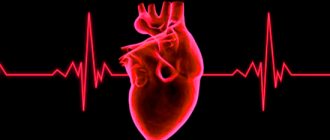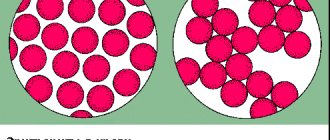About the serum
This substance has a yellow tint due to the fact that it contains a certain amount of bilirubin. If the metabolism of the pigment is disrupted, the concentration of this element will also suffer. In this case, the human blood serum will become completely transparent in color.
If it is derived from the plasma of a person recently eaten, it will appear cloudy in the shade. This is because it contains fatty impurities. Therefore, experts recommend taking tests without food before surgery.
It contains antibodies in large quantities. This is normal because they are formed in response to human illness. Serum helps identify pathologies present in the body. It is also needed for:
- do a biochemical blood test;
- conduct research to determine the patient’s blood type;
- Identification of the type of disease caused by infectious agents;
- to find out how effective the vaccine is for the human body.
In addition, blood serum is used with great success in the production of special preparations. They are necessary to combat infectious diseases.
In such measures, this substance is the main ingredient. This substance helps in the treatment of flu, colds, and diphtheria. The serum is part of drugs that are used for poisoning, including snake venom.
Blood determination
Serum for blood group recognition must be standard, that is, a certain group prepared from human blood. For the test, you need to prepare a dry glass slide, standard serum of the three blood groups, sodium chloride solution, cotton wool, glass rods and pipettes.
Blood serum is not just a complex mixture that can tell about the state of the body, but also an important element of most antiviral drugs.
All materials are published under the authorship or editorship of medical professionals (about the authors), but are not a prescription for treatment. Contact the specialists!
When using materials, a link or indication of the source name is required.
The thymol test (thymoloveronal test, thymol turbidity test, Maclagan test) is not one of the particularly popular biochemical methods of blood testing, however, it is not discounted when identifying certain diseases and is still used in clinical laboratory diagnostics.
A nonspecific reaction, based on the interaction with thymol in the veronal buffer of individual plasma proteins (gamma globulins and beta globulins associated with lipids - low density lipoproteins), and the turbidity of the solution, does not give a clear answer in relation to certain diseases, but often significantly helps in combination with other tests, and in some cases even outperforms them. This occurs in the initial stages of the disease (hapatitis A in children, for example), when other laboratory tests are still within normal limits. In addition, it has other advantages that do not allow laboratory diagnostic doctors to consign this analysis to oblivion.
Main functions of serum
Blood is very important for the human body. It performs quite important functions:
- saturates all cells and tissues of the human body with oxygen;
- distributes nutrients throughout the body;
- removes waste products from the body resulting from metabolic processes;
- maintains the state of the body as a whole when the external environment changes;
- naturally regulates the temperature of the human body;
- protects the body from bacteria and microorganisms that can cause harm.
Biologically, plasma consists of 92% water, 7% proteins, 1% fats, carbohydrates and minerals. Blood contains 55% plasma, the rest is cellular material. Its main function is to transport nutrients and numerous trace elements through the cells of the body.
In medical parlance, blood serum is called "serum". It is obtained after the separation of cells such as fibrinogen from the blood. The resulting liquid helps diagnose various pathological processes.
They are also used to determine the effectiveness of vaccinations, the presence of an infectious disease and for biochemical tests. In obstetrics and gynecology, blood serum is actively studied for medical purposes. Also, after surgery, this substance is taken for research. This substance is widely used in medicine.
Based on all the tests, it is possible to determine a person’s blood type, create an immune serum, and determine whether pathological changes are occurring in the body. As for diseases, protein deficiency can be determined by it.
Blood composition
The material is a red liquid that, when moving, delivers nutrients to organs and tissues
Another important property of blood is the cleansing of cells from decay products. This is what protects the body from self-poisoning
Oxygen saturation, regulation of body temperature and protection from pathogenic bacteria are also the merits of the red liquid.
The composition of the liquid consists of the following components:
- 55% plasma;
- 45% red blood cells;
- less than 1% of leukocytes.
Plasma, in turn, consists of:
- albumins that carry out transportation;
- globulins that protect the blood;
- fibrinogen - a protein that coagulates the material.
Important!
90% of the total plasma volume is water, and only 10% are important protein components.
Receiving process
Blood serum can be obtained in two ways:
- Natural process. When plasma coagulation occurs naturally.
- With the help of calcium ions. This method is based on an artificial process for obtaining whey.
Each of them consists of neutralizing fibrinogen, resulting in the formation of the necessary substance.
In medical parlance, this procedure is called defibrillation. To obtain serum, a specialist takes blood from a vein. Before the procedure, you should follow several recommendations in order to obtain high-quality material:
- The day before defibrillation, you should not smoke or drink alcohol;
- do not eat anything 12 hours before the procedure;
- don't eat junk food;
- You should not do any physical activity for several days;
- avoid stressful situations;
- You should stop taking any medications two weeks before your blood test, but if stopping treatment is not recommended, tell your doctor about your prescribed medications.
Few people know what whey is. Many people think that this is only necessary for research.
Important: serum is one of the main ingredients of some medications. It plays a huge role in medicine.
Serum and plasma: differences
To understand the difference between each of them, you need to know what they are and how they are made.
Plasma
Liquid substance. It is obtained after the removal of certain blood elements. This is the biological environment that is tired of:
- vitamins;
- hormones;
- proteins;
- lipids;
- carbohydrates;
- dissolved gases;
- salt;
- intermediate metabolites.
As a result of the precipitation of forming elements, specialists distinguish between blood plasma.
Serum
A liquid substance formed when blood clots. This occurs when special substances are added to the plasma to trigger this process. They are called coagulants.
The serum has a yellowish tint. It does not contain the proteins that plasma contains. The serum contains antihemophilic globulin and fibrinogen.
This substance is used to diagnose pathology. And also to treat or prevent their development. Thanks to this substance, medicine has learned to create immune serums. They contain antibodies against serious diseases.
To obtain the substance, you need pure biological material, which is placed in a special container for 60 minutes. Using a Pasteur pipette, the clot is separated from the walls of the test tube. Then transfer the cottage cheese to the refrigerator and leave for several hours. When the whey has settled, it is poured into a sterile container using a special pipette.
So, the difference between blood serum and plasma is that the latter is a natural substance. Plasma is constantly present in the human body. However, serum is obtained from it only outside the body.
Serum is used to create effective medicines. They can not only treat, but also prevent the development of infectious pathologies. Serum as a research material has many advantages over plasma. One of them is stability. The resulting material does not harden.
Production
Fetal bovine serum is a by-product of the dairy industry. Fetal bovine serum, like the vast majority of animal serum used in cell culture, is produced from blood collected in commercial slaughterhouses from dairy cattle that also supply meat intended for human consumption.
The first step in the fetal bovine serum manufacturing process is the collection of blood from the bovine fetus after the fetus has been removed from the slaughtered cow. The blood is collected under sterile conditions in a sterile container or blood bag and then clotted. The usual collection method is cardiac puncture, in which a needle is inserted into the heart. This minimizes “the risk of contamination of the serum by microorganisms from the fetus itself and the environment.” It is then centrifuged to remove the fibrin clot and remaining blood cells from the clear yellow (straw) serum. The serum is frozen before further processing, which is necessary to make it suitable for cell culture.
The second stage of processing involves filtration, typically using a filtration chain, with the final filtration being triple sterile 0.1 micrometer membrane filters. When processed by a trusted commercial serum supplier, sterilized fetal bovine serum is subject to strict quality control and is supplied with a detailed Certificate of Analysis. The certificate provides full test results and information about the origin of the whey. Certificates of Analysis vary between commercial providers, but each typically includes the following details: filtration statement, country of origin, cell growth performance testing, microbial sterility testing, mycoplasma and virus screening, endotoxin, hemoglobin, IgG, and total protein assays.
Serum iron and its norm
Plasma is filled with proteins that carry important substances that are insoluble in the blood. Transferrin is responsible for transporting iron. Using biochemical analysis, this complex can be determined, as well as the necessary indicators.
As a rule, iron atoms contain hemoglobin. At the end of life, the cells are destroyed and enough iron is released. The whole process takes place in the spleen. To transfer these valuable microelements to the site of formation of new red blood cells, the help of the same proteins is needed - transferrin.
Thus, the atoms mix with the plasma. Normal serum iron concentration ranges from 11.64 to 30.43 µmol/L. These are normal values for men. In women, the iron norm ranges from 8.95 to 30.43 µmol/l.
If these values fall, then this element is not enough. The reasons for this may vary. For example, nutritional disorders or insufficient absorption of iron through the digestive system. As a rule, it is often found in atrophic gastritis. Elevated values also prove that pathological processes are occurring in the human body.










